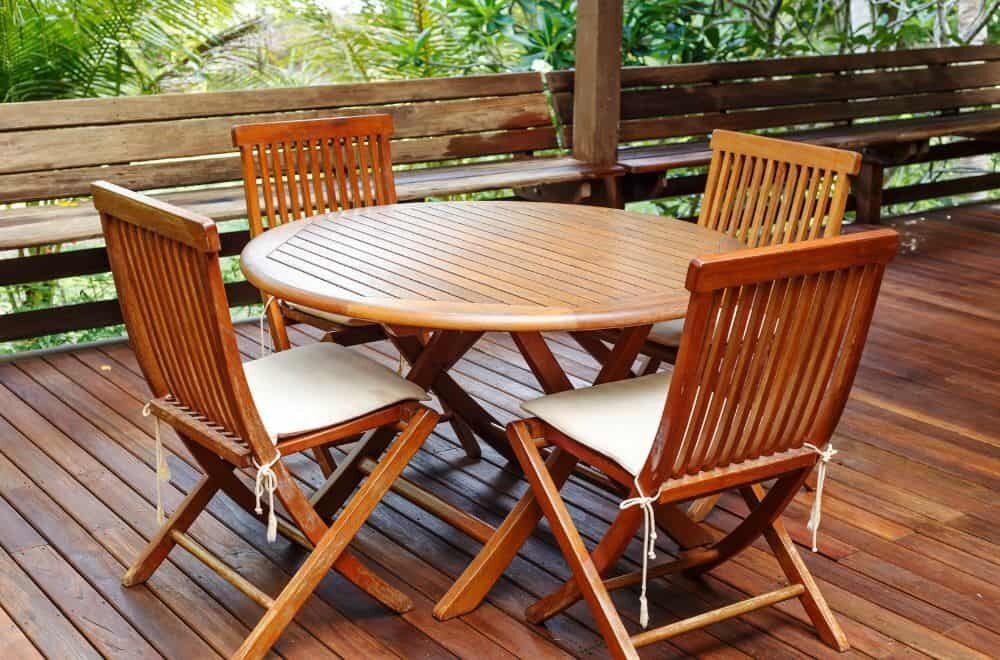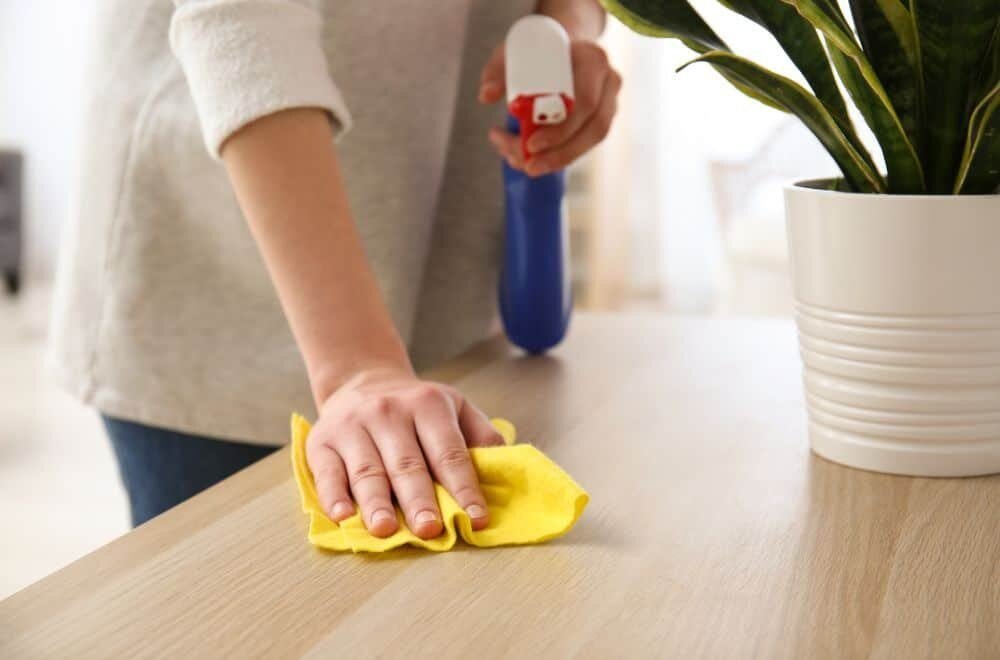Are you wondering if it’s safe to use Lysol spray on your wooden furniture? The answer is not straightforward. Lysol is a popular disinfectant used for cleaning and sanitizing surfaces. However, when it comes to wood furniture, you need to be cautious as it can cause damage if not used correctly.
The type of wood and the finish on the furniture determine whether it’s safe to use Lysol spray. If the wood is unfinished or porous, Lysol can soak deep into the pores and cause damage. On the other hand, if the wood is finished or sealed, Lysol is safe to use. In this article, we’ll explore whether you can use Lysol spray on wood furniture and the proper usage of Lysol spray on finished wood.
Understanding Lysol Spray
If you are looking for a quick and effective way to disinfect your wooden furniture, Lysol spray might seem like a good option. However, before you start spraying, it’s important to understand what Lysol spray is and how it works.
Lysol spray is a disinfectant that is designed to kill germs and bacteria on surfaces. It contains active ingredients like alkyl dimethyl benzyl ammonium chloride and ethanol that help to break down and destroy the cell walls of germs and bacteria, rendering them harmless.
When you spray Lysol on a surface, it creates a fine mist that settles on the surface and begins to work immediately. The active ingredients in Lysol spray can kill up to 99.9% of germs and bacteria, making it a powerful tool in the fight against illness and disease.
However, it’s important to note that Lysol spray is not a miracle cure-all. While it can be effective at killing germs and bacteria on surfaces, it is not a substitute for proper cleaning and hygiene practices. Regular cleaning with soap and water is still the best way to keep your wooden furniture clean and free from germs.
In addition, it’s important to use Lysol spray correctly to avoid damaging your wooden furniture. Always follow the instructions on the label and never use undiluted Lysol spray on wooden surfaces. Diluting Lysol spray with water can increase its cleaning power, but it can also be dangerous for your wooden furniture if used too frequently.
Wood Furniture Basics

When it comes to cleaning wood furniture, it’s important to understand the basics. Wood is a porous material that can absorb moisture and chemicals, which can cause damage to the furniture. Here are a few things to keep in mind when cleaning wood furniture:
- Use a soft cloth: When cleaning wood furniture, always use a soft cloth to avoid scratching the surface. Avoid using abrasive materials like steel wool or rough sponges.
- Avoid water: Water can cause damage to wood furniture, so it’s important to avoid using too much water when cleaning. If you need to use water, use a damp cloth and immediately dry the surface with a dry cloth.
- Use a gentle cleaner: When cleaning wood furniture, it’s important to use a gentle cleaner that won’t damage the surface. Avoid using harsh chemicals or cleaners that contain bleach or ammonia.
- Test in a small area: Before using any cleaner on wood furniture, it’s important to test it in a small, inconspicuous area first. This will help you avoid any damage to the furniture.
By following these basic guidelines, you can keep your wood furniture looking great for years to come.
Potential Effects of Lysol on Wood
Using Lysol on wood furniture can have potential effects on the surface, depending on the type of wood and the frequency of use. Here are some things to keep in mind:
- Discoloration: Lysol contains chemicals that can cause discoloration on certain types of wood, particularly if used frequently or in high concentrations. This can result in an unsightly appearance and may require refinishing or replacement of the affected piece.
- Drying and cracking: Over time, Lysol can dry out the natural oils in wood, causing it to become brittle and prone to cracking. This is especially true for older or more delicate pieces of furniture.
- Damage to finishes: If your wood furniture has a protective finish, such as varnish or lacquer, using Lysol can cause the finish to break down over time. This can leave the wood vulnerable to further damage from moisture, heat, and other environmental factors.
To avoid these potential effects, it’s important to use Lysol on wood furniture sparingly and with caution. If you do need to disinfect a piece of wood furniture, consider using a diluted solution of Lysol and water, and be sure to wipe the surface clean with a damp cloth afterward to remove any residue.
In general, it’s a good idea to consult with a professional before using any cleaning or disinfecting product on wood furniture, especially if you’re unsure about the type of wood or finish. With proper care and maintenance, your wood furniture can remain beautiful and functional for many years to come.
Alternative Methods for Cleaning Wood Furniture

If you’re hesitant to use Lysol spray on your wooden furniture, there are alternative methods for cleaning it. Here are a few options to consider:
1. Damp Dusting
Damp dusting is a great way to clean your wooden furniture without damaging it. To do this, you’ll need a microfiber cloth and some clean water. Simply dampen the cloth with water and wipe down the furniture. This will help remove any dust or dirt that has accumulated on the surface.
2. Dish Soap and Water
Another option is to use a mixture of dish soap and water. Mix a few drops of dish soap with some warm water and use a cloth to wipe down the furniture. This will help remove any dirt or grime that has built up on the surface.
3. Vinegar and Water
Vinegar is a natural cleaning agent that can be used to clean wooden furniture. Mix equal parts water and vinegar and use a cloth to wipe down the furniture. This will help remove any dirt or grime that has built up on the surface.
4. Furniture Polish
Using furniture polish is a great way to clean and protect your wooden furniture. Simply spray the polish onto a cloth and wipe down the furniture. This will help remove any dust or dirt that has accumulated on the surface and will also help protect the wood from future damage.
Remember to always test any cleaning solution on a small, inconspicuous area of the furniture before using it on the entire piece. This will help ensure that the solution doesn’t damage the wood.
Precautions When Using Lysol on Wood Furniture

If you’re considering using Lysol spray on your wood furniture, there are a few precautions you should take to ensure that you don’t damage your furniture or harm yourself. Here are some things to keep in mind:
1. Test on a Small Area First
Before you use Lysol on your wood furniture, test it on a small, inconspicuous area first. This will help you determine if the spray is safe to use on your furniture without causing any damage or discoloration.
2. Protect Yourself
When using Lysol on your wood furniture, it’s important to protect yourself. Wear hand gloves, a dust mask, and eye protection to avoid any adverse effects that may come with the use of the spray.
3. Avoid Overuse
Lysol spray should only be used as a spot treatment and not as a general cleaning product. Overuse can damage the wood or cause discoloration. It’s recommended to only use Lysol spray on your wood furniture when necessary.
4. Wipe Off the Liquid
After spraying Lysol on your wood furniture, it’s important to wipe off the liquid with a damp cloth or paper towel. This will help prevent any damage or discoloration to the wood.
5. Use a Fan to Remove Smell
Lysol spray has a strong smell that may linger for some time. To remove the smell, turn on a fan or open a window to allow for proper ventilation.
By following these precautions, you can safely use Lysol spray on your wood furniture without causing any damage or harm to yourself.
Professional Tips for Wood Furniture Care

If you want to keep your wood furniture looking great, you need to take care of it properly. Here are some professional tips to help you do just that:
1. Dust Regularly
Dust can scratch and damage the finish on your wood furniture, so it’s important to dust it regularly. Use a soft cloth or a microfiber duster to remove dust, and be sure to get into all the nooks and crannies.
2. Use a Gentle Cleaner
When you need to clean your wood furniture, use a gentle cleaner that is specifically designed for wood. Avoid using harsh chemicals or abrasive cleaners that can damage the finish.
3. Wipe Up Spills Immediately
If you spill something on your wood furniture, be sure to wipe it up immediately. Liquids can seep into the wood and cause damage, so it’s important to act quickly.
4. Avoid Direct Sunlight
Direct sunlight can fade and damage the finish on your wood furniture. If possible, keep your furniture out of direct sunlight or use window coverings to block the sun.
5. Use Coasters and Placemats
To prevent scratches and water damage, use coasters and placemats on your wood furniture. This will help protect the finish and keep your furniture looking great.
By following these professional tips for wood furniture care, you can help ensure that your furniture looks great for years to come.
Frequently Asked Questions
Is it safe to use Lysol spray on wood furniture?
No, it is not advisable to use Lysol on wooden furniture. The reason is that if it is natural wood and not just laminate wood, Lysol can soak deep into the pores of the wood and cause damage to it. Manufacturers ask to dilute Lysol with water to increase its cleaning power which can also be dangerous for your wooden surfaces.
Will Lysol spray leave stains or discoloration on wood?
Yes, Lysol spray can leave stains or discoloration on wood if it is not used properly. It is not recommended to use Lysol on wooden furniture as it can penetrate deep into the pores of the wood and cause damage to it. If you must use Lysol on wood, dilute it with water and test it on a small and inconspicuous area first.
What disinfectant is safe to use on wood furniture?
There are several disinfectants that are safe to use on wood furniture, such as vinegar, hydrogen peroxide, and rubbing alcohol. These disinfectants are effective in killing germs and bacteria without damaging the wood. It is important to dilute these disinfectants with water and test them on a small and inconspicuous area first.
Can Lysol residue be removed from wood surfaces?
Yes, Lysol residue can be removed from wood surfaces with the help of a mild detergent and warm water. It is important to avoid using harsh chemicals or abrasive materials that can damage the wood. After cleaning, rinse the area thoroughly with water and dry it with a soft cloth.
Can Fabuloso be used on wood floors?
No, Fabuloso should not be used on wood floors. Fabuloso is a multi-purpose cleaner that contains harsh chemicals that can damage the wood. It is important to use a cleaner that is specifically designed for use on wood floors.
How to remove Lysol stains from unfinished wood?
To remove Lysol stains from unfinished wood, mix equal parts of vinegar and water and apply the solution to the stained area. Let it sit for a few minutes, then wipe it away with a clean cloth. Repeat the process until the stain is completely removed.